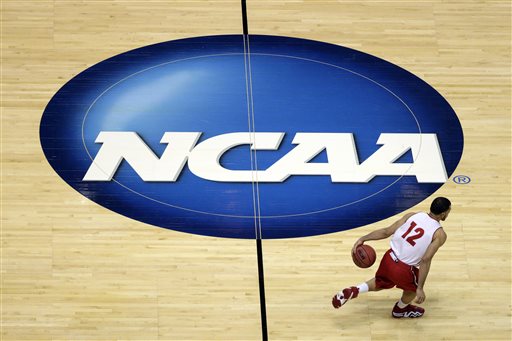It has been a dizzying few months for big-time college football and basketball players, coaches, fans and the attendant media. How all of this will change college sports is yet to be determined, but without a doubt, we are in a new era. On the one hand, it is pleasurable to see an operation as bureaucratic, heavy-handed and corrupt as the NCAA take a few lumps. They ran themselves like you would expect a bunch of out of touch academia nuts would, which is to say, they had a rule for everything and common sense for nothing.
So afraid was the NCAA that Kentucky would buy basketball players or that Auburn would buy football players with suitcases of cash – that they made sure a poor kid playing for N.C A&T could not get a pizza or have his parents visit for the opening round of March madness. Only academic bureaucrats could have designed the NCAA rulebook. Which they did. Only IRS tax law is more cumbersome and nonsensical. (also designed by bureaucrats, I might add)
On the other hand, market forces of supply and demand insist that college athletes already had a pretty darn good deal. If not, rosters would go begging, and that’s not the case. There is more demand for these scholarships than there is supply – or put another way – there is more supply of good athletes than there is demand. This just is. Not that anyone on the NCAA’s defense team was smart enough to figure this out and say so.
Having said all that, some stipends for meals and some family travel should have been commonsense changes years ago. In fact, years ago colleges would allow for some meal and laundry money for athletes. And the rule about scholarships being offered on year at a time? Absurd. Many school have waived that option, but it was criminal in the first place.
The Landmark Rulings:
The first ruling was one that might manifest down the road more than it does immediately – and that is the National Labor Relations Board (NLRB) ruling that Northwestern University football players were employees – and thus could form a union. Reports from the inside say that while Wildcat players liked the ruling, they have very little interest in actually doing so. The ballot was secret, and not yet divulged – but that seems to be the consensus.
Unionization could well end up being a double edge sword for athletes – with a wickedly sharp back edge – and it seems as if the Wildcats figured that out. Be careful what you ask for.
Then, in rapid fire order came Maryland’s settlement with the ACC over conference exit fees, followed by the O’Bannon case against the NCAA and the splitting off of the 5 major conferences from the NCAA umbrella. Of these, the O’Bannon case is the most significant, but all of these issues are intertwined.
The ACC/Maryland settlement, combined with the Five Power conferences splitting off, probably brings an end (for a while) to the revolving door of conference memberships. This Pandora’s Box is shut — for now.
I believe that led to the power schools and conferences readily agreeing to some of the O’Bannon ruling.
Concerning O’Bannon, it is a Pandora’s box that no one can fully contemplate yet. It will force some needed reforms, but the law of unintended consequences is always lurking – and often strikes shortly after a liberal judge has made a ruling.
Will this change the nature of the fans’ relationship with players, and schools? I think it might. Will the money factor be more important – in other words – will schools “bid” on players or will the stipend be a set fee? We love that universities compete on the field and on the court, but do we want to turn this into an economic competition purely? I don’t think so.
And what about the share of jersey and likeness revenues. It’s easy to think this is a good idea, but will the next Johnny Manziel cause dissension on his team with his big checks for jersey sales? You know, offensive lineman don’t sell jerseys, but they keep those that do healthy.
And all of this is likely to give even more advantages to the huge state universities – Ohio State, Florida, Michigan and Michigan State, etc. They all have more fans to buy more jerseys, and thus can indeed “buy” players from smaller schools simply based on that.
All of which begs another question: should Kentucky basketball return a percentage of its revenues to the citizens of Kentucky? After all, it is the name KENTUCKY that sells the tickets and brings in the donations. Did long before the current players were born and will long after the current players are off the team. If Manziel is worth something on the back of the jersey, what was Texas A&M worth on the front? Anyone who thinks the free market ramifications of this are one sided and simple is not paying attention. If the name Redskins is valuable to Daniel Snyder – and it is – then the name of a huge state brings incredible equity to sports teams.
Again, not that anyone on the NCAA defense team is smart enough to have said so.
And speaking of that, will those built-in fan bases remain as enthusiastic about paid players in the future? I think it’s an open question.
At this point, there are more questions than answers. I have my opinions, but this is now uncharted territory. Some of the changes will be good. Some of it will be bad. But almost all of it will be very different.

COMMENTS
Please let us know if you're having issues with commenting.